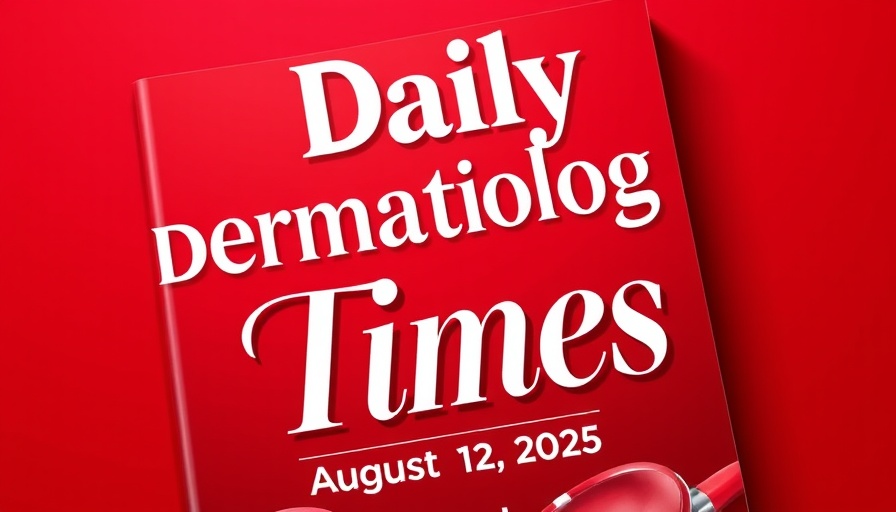
The Evolution of Psoriasis Treatment: Focusing on Patient Needs
The landscape of psoriasis treatment is undergoing a significant transformation. As highlighted in recent articles, including the Daily Derm Times, there's an increasing emphasis on patient-centered care, particularly for moderate psoriasis cases. This shift is significant, as it acknowledges that even patients with low body surface area (BSA) involvement often face considerable challenges that can impact their quality of life.
Traditionally, treatment criteria for psoriasis have focused on measurable physical symptoms, but emerging insights reveal a much deeper narrative. Patients experiencing low BSA psoriasis frequently report high levels of discomfort and emotional distress, a situation that has sparked discussions among dermatologists about re-evaluating assessment methods.
Scientific Advancements and Compared Outcomes
The introduction of innovative therapies, such as Guselkumab, has marked a turning point in managing plaque psoriasis. Recent findings from the G-EPOSS study show that this treatment significantly enhances patients’ quality of life and clinical outcomes over a 76-week period. Such advancements underline the critical role that scientific research plays in our understanding of skin health and effective treatment approaches.
Addressing Hidradenitis Suppurativa: A Call for Awareness
In addition to psoriasis, hidradenitis suppurativa (HS) remains a focus among healthcare professionals. The recent HS Summit underscored the need for better diagnostic strategies and increased awareness, as early misdiagnosis is a barrier to effective treatment. Patients struggling with HS often feel isolated and discouraged, highlighting a greater societal issue regarding the visibility and understanding of skin conditions.
Exploration of Pediatric Atopic Dermatitis Treatments
Pediatric dermatology also sees promising strides, particularly in the treatment of atopic dermatitis. Emerging topical therapies, like ruxolitinib, are showing great potential in improving adherence and clinical outcomes among young children. This progress not only opens avenues for effective treatment but also offers hope to parents navigating the complexities of childhood skin conditions.
Future Directions in Cosmetic Dermatology
As we peer into the future of cosmetic dermatology, the integration of non-invasive treatments is becoming increasingly prevalent. From injectable fillers to laser resurfacing techniques, advancements are being made that prioritize not just aesthetic outcomes, but also skin health. Several emerging technologies are reshaping the beauty landscape, including the use of RF technology for cellular rejuvenation and chemical peels for skin brightening.
Furthermore, innovations in beauty research mean that procedures like non-surgical facelifts and body contouring are more accessible, allowing individuals to embrace their beauty in ways that align with their lifestyle. As this field continues to evolve, staying informed on new techniques and technologies can enhance both personal care routines and treatment choices.
The Importance of Ongoing Education and Patient Advocacy
Equally important is the role of education in dermatology. Patients must be aware of their options and the latest advancements in treatments to advocate for their own health effectively. Healthcare providers also need to keep abreast of emerging technologies to provide the best possible care. Emphasizing education and awareness can help bridge the gap between the latest dermatological findings and patient care practices.
Join the Dialogue on Dermatological Innovations
As we continue to explore dermatology’s dynamic field, we invite you to share your insights. These discussions not only enhance our understanding but also foster a community that appreciates the vital importance of skin health. Whether you’re a patient, a healthcare provider, or just someone interested in the latest beauty and health trends, your voice is an important contribution to this evolving narrative.
 Add Row
Add Row  Add
Add 




Write A Comment